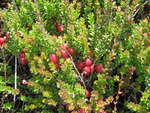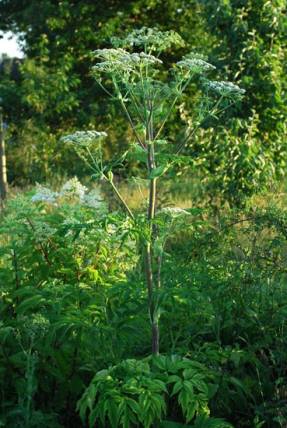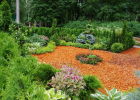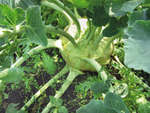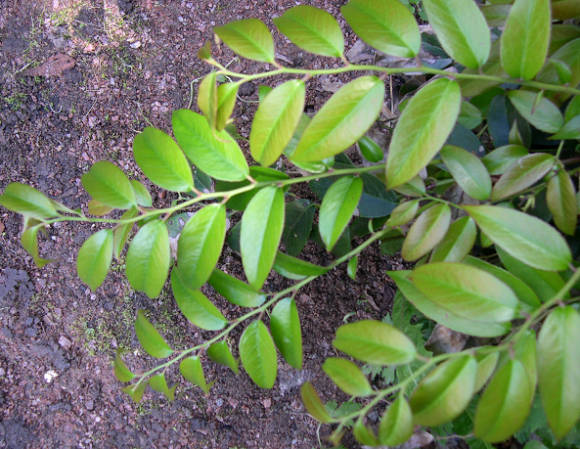
For landscape design of the garden, not only flowering plants are used. Coleus - perennial or annual flowers, which many grow as indoor flowers, are becoming more and more popular in landscaping.
The growing bushes of Coleus attract lovers of beauty not with flowers, but with their beautifully colored leaves, resembling in shape the leaves of dioecious nettle. It is because of this that Coleus received the popular name "nettles".

Coleus (Coleus) belongs to the family of luciferous plants. He is now referred to the genus Plectranthus. (Plectranthus scutellarioides), whose representatives grow in tropical Africa and Asia. These are perennial or annual herbaceous plants or shrubs with elongated cordate or elongated oval leaves.
Coleus is a spectacular and unusual plant. Coleus flowers, unlike other plants, are not of particular interest. And they grow Coleus for the sake of unusual brightly colored velvety leaves. That is why coleus in annual culture is used for high borders along the edge of a flower garden, in carpet beds, in containers or vases, combining plants of various shapes and colors of leaves.

Coleus hybrid (Coleus x hybrida) - a herbaceous plant up to 50-60 cm high. Its stem is erect, branching, tetrahedral, succulent, finely pubescent.
Coleus leaves are often wavy along the edge, finely velvety pubescent, with sparse long hairs, variably and variegatedly colored in green, red, dark purple, violet-brown and other colors. The contrasting colors of the split veins and the framing of the coleus are reminiscent of works of art from tropical Africa and Asia.
Characteristic features are: erect stems square in cross section and opposite arrangement of oval velvety leaves.
Each young plant grown from seeds intrigues the grower for some time, being a mystery to him - after all, the first leaves appear green and it is not at all clear what the color of the leaf will be.
The flowering of Coleus is not very decorative: small nondescript flowers with a two-lipped corolla with a blue-violet upper and whitish lower lip are collected in complex ears. The formation of flowers takes a lot of energy from the plant, because of which the leaves become smaller, so it is better to remove the buds.
 |  |
 |  |
Growing coleus
Despite their tropical origin, Coleus are unpretentious and grow quickly. They need a protected, sunny or shaded place. In spring and summer, there may be a loss of color (fading) and turgor in the leaves, associated with excessive exposure to sunlight.
The soil... Coleus is undemanding to the soil, so any land that is rich in nutrients is suitable for planting him in the country.
Top dressing... During the period of active growth, the plant is fed every week with a mineral fertilizer complex intended for decorative deciduous plants. The introduction of organic dressings has a good effect on the growth and color of leaves.
Watering. Coleuses react very sharply to the lack of moisture in the soil - the leaves become flabby. If the tap water is hard, then rainwater should be used.
Pinching... For the development of lush greenery, coleus should be regularly pinched. First, the main stem of the coleus is pinched, and then the grown side branches. Shortening shoots not only stimulates the growth of a lush crown, but also prevents the coleus from blooming.
 |  |
 |  |
Reproduction of coleus
Coleus are propagated by seeds, and sometimes by cuttings, in order to avoid splitting and loss of decorativeness of the leaves.
Sowing seeds... Coleus seeds are very small. They are sown (or rather, scattered through a fine sieve) in February-March in small containers with a nutrient substrate and lightly sprinkled with sand on top. Crops must be sprayed with water several times a day so that the ground is always moist. At a temperature of + 20 ... + 22 ° C, seedlings appear on the 15-20th day.
Seedlings dive into peat pots with a soil mixture consisting of equal shares of leafy, peaty, turfy soil and sand; they are regularly watered and fed before they are planted in open ground.
The main care of plants consists in watering, keeping them in a lighted place, since the intensity of the color of the leaves largely depends on the lighting.
Cuttings... Plants are started by cuttings in February-April. Rooting takes place within 8-12 days. Rooted cuttings are planted in pots with a diameter of 11–12 cm. The composition of the soil is the same as for picking. Coleus are distinguished by intensive growth - within 3 months they are already branched plants with large leaves.
Coleuses are usually planted in a flower garden in small groups, in which various shades of leaves are combined. They are notable for their rapid development. For 2.5–3 months, a large, highly branched plant with large leaves is obtained from the seedling. Cuttings grow even faster.
 |  |
 |  |
For the winter - indoors
Coleus look great against the background of a plain lawn or other plants with green leaves in single plantings.
With the onset of autumn cold snaps, the plants that you want to save can be transplanted into ordinary pots of a suitable diameter with a nutrient substrate and sent to the apartment for wintering. They keep it in a pot in the winter on the sunniest window at a temperature of about + 15 ° C.
If the coleus is grown as an annual, then it is not transplanted. In other cases, overgrown plants are transplanted once every 2-3 years. Substrate for transplantation is taken slightly acidic or neutral (pH 6-7). A mixture of sod, deciduous and humus soil, sand and peat in a ratio of 4: 4: 2: 1: 1 is suitable. Good drainage is needed at the bottom of the pot.
And in the spring, coleuses that have overwintered indoors (like indoor plants) should be heavily cut (into cuttings), transplanted into fresh soil and fertilized. Cuttings from such a plant will quickly take root and give a lush new growth in the spring sun.
"Ural gardener", No. 11, 2020

